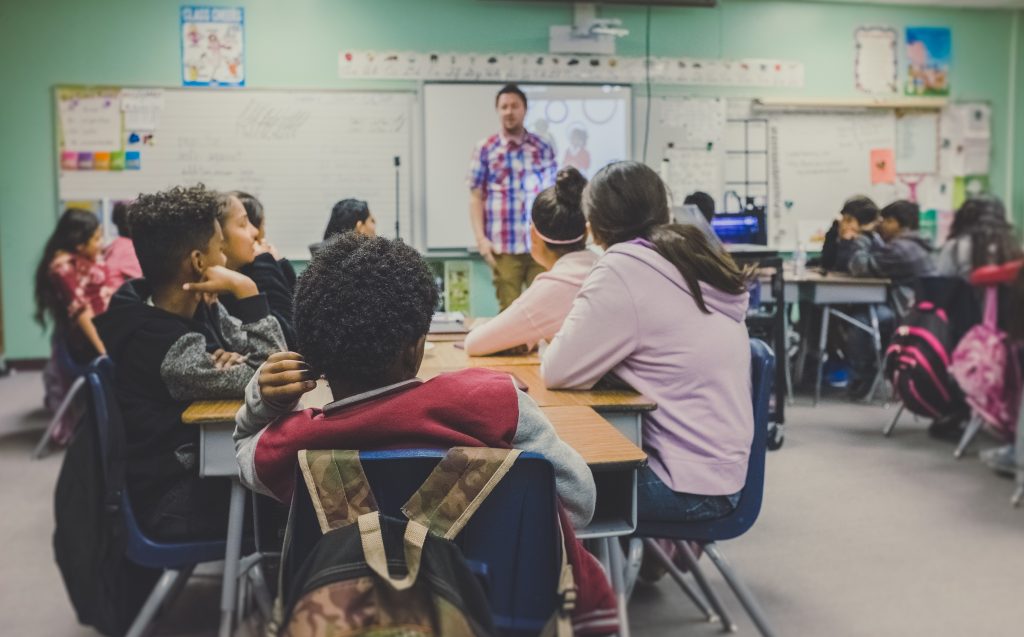
Self-injurious thoughts and behaviours (SITAB), referring to self-harm, suicide ideation, and suicide attempts, are a serious public health concern. These behaviours are often interconnected, co-occur, and are a particular issue among young people, with studies estimating that around 17% of adolescents have engaged in self-harm at least once (Gillies et al., 2018).
Social relationships play a key role in influencing health and behaviour, including SITAB. Peers have a considerable influence on various health-related behaviours among adolescents, such as drug use, sexual behaviours, risk-taking, and, notably, self-harm and suicidal tendencies. Research has shown that peer networks within schools are related to mental health, and that behaviours can spread through a friendship network via socialisation (Jarvi et al., 2013; Mars et al., 2019; Montgomery et al., 2020; Syed et al., 2020); simultaneously, the school environment and friendships can also work as protective factors.
Sociometric data, which map out friendship networks, are crucial in understanding these processes, and require specific network models to test them effectively (Hall & Melia, 2022; Snijders et al., 2010). While there is some support from previous systematic reviews on the influence of peer networks on health-related behaviours, there is a lack of research specifically examining SITAB in this area (Jarvi et al., 2013). Crudginton and colleagues (2023) attempted to address this by conducting a systematic review focused on the research question: “What are the findings of studies that have used sociometric social network analysis methods to investigate the association between self-injurious thoughts and behaviours and peer friendship networks in adolescence in a school-based setting?”.

Friendships play a crucial role in influencing adolescent health-related behaviours, including self-injurious thoughts and behaviours. What can social network analyses of school friendships tell us about this association?
Methods
A systematic literature search was conducted between July 2021 and May 2022, using five databases, to identify sociometric studies investigating peer friendship networks in adolescence (ages 11-18 years).
The eligibility criteria were applied to each study identified through the literature search, with a high level of agreement (>90%) between researchers. Data extraction involved assessing each study for risk of bias, using two tools (Knox et al. 2019; Sabot et al. 2017) which have been employed in previous social network analysis reviews. Risk of bias was deemed relatively low.
Evidence was then synthesised based on the type of network metric used, which were divided into two groups:
- Peer-network structure (which could be individual, proximal to peers, or network-wide)
- Exposure to friends’ SITAB (self-injurious thoughts and behaviours)
Results
Fifteen eligible studies were identified. Participants were aged 11-19 years. Eleven studies had a mix of ethnicities, with predominantly White participants (ranging from 45 to 86%). Three studies had Chinese participants only, and one study had an all-female Latina population. Apart from the latter, female populations ranged from 46% to 56% across the studies. Sample sizes ranged from 348 to 13,482 students.
Thirteen of the studies were longitudinal and 2 were cross-sectional. Of the 15 studies:
- 6 measured self-harm
- 8 measured suicidal ideation
- 8 measured suicide attempts
Studies that measured peer-network structure (e.g., popularity, isolation, density) found that the structure of how young people are connected to their friends plays a significant role in SITAB (self-injurious thoughts and behaviours):
- Higher betweenness (bringing others into the friendship group) was positively associated with self-harm
- Mixed findings for popularity (how many friendship nominations someone receives), with one study finding a negative association with suicidal ideation and attempts
- Higher sociality (how many friendship nominations someone sends) was negatively associated with SITAB
- Mixed findings for isolation (someone who neither sends nor receives friendship nominations), with two out of the three related studies finding a positive association with SITAB
- Belonging to intransive friendship groups (where friends are not friends with each other) was associated with a greater risk of SITAB
- Coreness (size of friendship group based on own and immediate friendship nominations) was negatively associated with suicidal attempts and ideation
- Mixed findings for reciprocity (having friends who do/not self-harm), with one of three studies finding an association
- Being part of a denser friendship group (number of connections within an adolescent’s immediate friend group) was associated with lower rates of SITAB; this may act as a protective factor by buffering against mental distress and providing support.
Studies that investigated exposure to friends’ SITAB (e.g., socialisation, reciprocal friendships) found that school peer friendship groups can have both positive and negative associations with SITAB:
- Having friends who engage in self-harm was found to be positively associated with self-harm among adolescents
- Only one study in the review used the best practice of the stochastic actor-oriented model (SAOM) network model, which separates socialisation and selection processes. This study found evidence for indirect socialisation (a behaviour influenced by a related behaviour) of self-harm through a friend’s depression symptoms
- The findings regarding ideation and suicide attempts were mixed, with three out of five studies showing a positive association.

This review suggests that factors such as isolation and having friends who self-harm are positively related with self-injurious thoughts and behaviours.
Conclusions
By conducting a systematic review of sociometric studies, the authors concluded that:
in-school peer-friendship networks are associated with self-injurious thoughts and behaviors across the developmental period of adolescence.
However, there is a caveat in that these friendships can be positive as well as negative, with some metrics demonstrating negative associations.

Overall, peers do seem to have an impact on self-injurious thoughts and behaviours across adolescent development, spanning from early to late adolescence.
Strengths and limitations
Strengths
This systematic review focused on whole network data, which shows the relationships between different members of a defined group (e.g., a school or year group). This allows the position of individual participants in a network to clearly be seen, as well as their connections to others in that network, which enhances our understanding of network dynamics and their association with SITAB.
The researchers also assessed each study for its risk of bias, which was deemed relatively low, subsequently increasing the confidence of the findings. As there is not a standard tool for measuring bias within network studies, the authors used two tools from previous similar studies; this was novel, but also highlighted the need for such a tool to be developed.
The researchers further exhibited best practice by reaching a high level of agreement during screening, and adhering to thorough, pre-defined eligibility criteria. The study was registered on PROSPERO, and both the search criteria and PRISMA checklist were uploaded for transparency.
Limitations
- Eight studies relied on data from the same source (Add Health), and two studies used data from the same school, resulting in a limited number of independent studies across two countries. This restricts the generalisability of findings and suggests a context-specific focus.
- Variations in outcome measures across studies limit the ability to draw definitive conclusions regarding networks and specific SITAB. Analytical approaches, measurement of variables, and covariates also differed, making comparisons across studies challenging; the different operationalisation of network metrics could impact the consistency and comparability of findings.
- It is important to acknowledge that relevant studies could have been missed in the search, as network processes were not consistently described. Also, only peer-reviewed papers were included.
- Attrition could be a concern, as young people at higher risk of SITAB may be less likely to attend school (Friedmann et al., 2022). Of the studies used in the review, only six clearly reported attrition rates.
- Reliance on self-report data impacts the findings of the reviewed studies. For example, participants may have over-reported the size of their friendship networks in order to make themselves appear more positively, rather than looking like they have few or no friends.
- Differences in the methods used to identify friends and measure friendship networks means that these variables are not standardised across the studies used. This limits the conclusions which can be drawn from using these studies together.

The systematic review showed strengths in its pre-registration and focus on whole network studies. However, there are also limitations in multiple studies using the same dataset, varied outcome measures, and reliance on self-report.
Implications for practice
The findings from this systematic review have important implications for healthcare professionals, educational professionals, and researchers.
Implications for intervention and prevention
- Increasing the sense of community within schools and cultivating stronger social connections may be beneficial in preventing SITAB. This could be done by improving school connectedness, where students feel that staff and peers in school care about them as individuals as well as their learning. A core notion of school connectedness is feeling included: a sense of belonging and not feeling alone.
- Prevention and intervention efforts could involve identifying friendship groups where one or more individuals have known SITAB, as other friends within these groups may be at a higher risk.
- The above also applies to socially isolated students. After identifying these students, it is important that school-based interventions are in place to provide support. However, current school-based interventions to address self-harm are sparse and additional research is needed in this area to better support teachers and students (Nawaz et al, 2023).
Implications for future research
- There is a need for contemporary sociometric datasets that capture the complexities of friendship networks and their association with SITAB. Researchers should consider using stochastic actor-oriented models (SAOMs) in this endeavour, as they are crucial in distinguishing between socialisation and selection processes, which can inform preventive measures. They can use special models, such as SAOMs, to understand how friendships form and affect adolescents, which can help them create strategies to prevent negative influences and promote positive ones.
- Researchers should also consider exploring differences across the adolescent developmental period, as it is now recognised that adolescence continues into the twenties (Sawyer et al., 2018).
- Finally, it is important that researchers adhere to best practice guidelines when reporting studies, including the consistent reporting of response rates, alongside trying to standardise approaches for sociometric data collection, network metric measurement, and analysis. Both are essential for promoting comparability and advancing the field.

Increasing the sense of community within schools and cultivating a greater density of social connections may be beneficial in preventing self-injurious thoughts and behaviours among adolescents.
Statement of interests
None.
Links
Primary paper
Crudgington, H., Wilson, E., Copeland, M., Morgan, C., & Knowles, G. (2023). Peer-friendship networks and self-injurious thoughts and behaviors in adolescence: a systematic review of sociometric school-based studies that use social network analysis. Adolescent Research Review, 8(1), 21-43.
Other references
Gillies, D., Christou, M. A., Dixon, A. C., Featherston, O. J., Rapti, I., Garcia-Anguita, A., et al. (2018). Prevalence and Characteristics of Self-Harm in Adolescents: Meta-Analyses of Community-Based Studies 1990–2015. Journal of the American Academy of Child & Adolescent Psychiatry, 57(10), 733–741.
Hall, S., & Melia, Y. (2022). What is Known About the Role of Friendship in Adolescent Self-Harm? A Review and Thematic Synthesis. Child & Youth Care Forum,1–26.
Jarvi, S., Jackson, B., Swenson, L., & Crawford, H. (2013). The Impact of Social Contagion on Non-Suicidal Self-Injury: A Review of the Literature. Archives of Suicide Research, 17(1), 1–19.
John, A., Friedmann, Y., DelPozo-Banos, M., Frizzati, A., Ford, T., & Thapar, A. (2022). Association of School absence and exclusion with recorded neurodevelopmental disorders, mental disorders, or self-harm: A nationwide, retrospective, Electronic Cohort Study of children and Young People in Wales, UK. The Lancet Psychiatry, 9(1), 23–34.
Mars, B., Heron, J., Klonsky, E. D., Moran, P., O’Connor, R. C., Tilling, K., et al. (2019). What distinguishes adolescents with suicidal thoughts from those who have attempted suicide? A population-based birth cohort study. Journal of Child Psychology and Psychiatry, 60(1), 91–99.
Montgomery, S. C., Donnelly, M., Bhatnagar, P., Carlin, A., Kee, F., & Hunter, R. F. (2020). Peer social network processes and adolescent health behaviors: A systematic review. Preventive Medicine, 130, 105900.
Nawaz, R. F., Anderson, J. K., Colville, L., Fraser‐Andrews, C., & Ford, T. J. (2023). Interventions to prevent or manage self‐harm among students in educational settings–a systematic review. Child and Adolescent Mental Health.
Sawyer, S. M., Azzopardi, P. S., Wickremarathne, D., & Patton, G. C. (2018). The age of adolescence. The Lancet Child & Adolescent Health, 2(3), 223–228
Snijders, T. A. B., van de Bunt, G. G., & Steglich, C. E. G. (2010). Introduction to stochastic actor-based models for network dynamics. Social Networks, 32(1), 44–60.
Syed, S., Kingsbury, M., Bennett, K., Manion, I., & Colman, I. (2020). Adolescents’ knowledge of a peer’s non-suicidal self‐injury and own non‐suicidal self‐injury and suicidality. Acta Psychiatrica Scandinavica, 142(5), 366–373.
Photo credits
- Photo by Sam McNamara on Unsplash
- Photo by Sam Balye on Unsplash
- Photo by Element5 Digital on Unsplash
- Photo by Kenny Eliason on Unsplash
- Photo by Kimberly Farmer on Unsplash
- Photo by Philippe Bout on Unsplash
